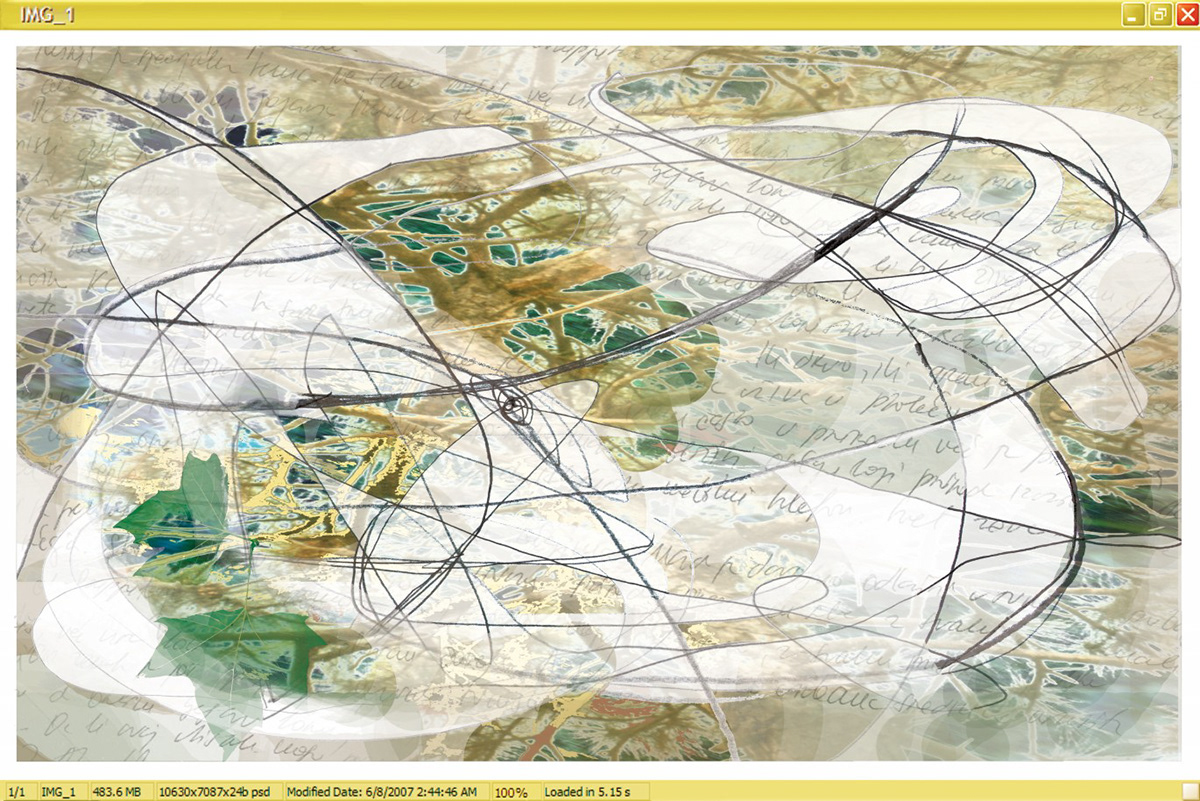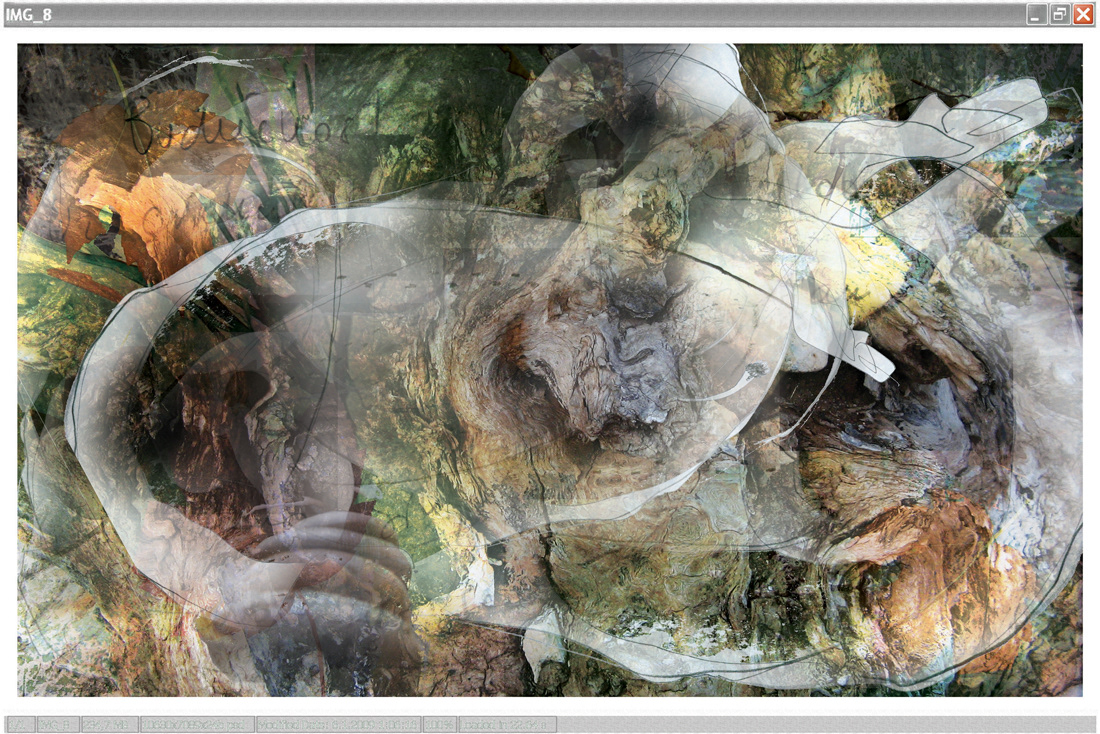Windows to Nature
M. A. degree thesis "Dichotomy and Synthesis of Digital andNatural"
M. A. degree thesis "Dichotomy and Synthesis of Digital andNatural"
Master of Arts Exhibition of Digital Graphics
Gallery of the Faculty of Fine Arts
November 5 – November 14, 2009
The author perceives the graphics, representing a forest environment, as a shelter from urbanization. Using a modern, digital process to create them, she is trying to merge two separate worlds: the nature, which has existed long before the ascent of man, and the electronic space, created by mankind for their own purposes. Although at first a part of the natural environment, humanity later became its own obstacle on the path to nature.
Gallery of the Faculty of Fine Arts
November 5 – November 14, 2009
The author perceives the graphics, representing a forest environment, as a shelter from urbanization. Using a modern, digital process to create them, she is trying to merge two separate worlds: the nature, which has existed long before the ascent of man, and the electronic space, created by mankind for their own purposes. Although at first a part of the natural environment, humanity later became its own obstacle on the path to nature.

"My attitude towards nature is undemanding. I believe that it is self-sufficient – it is fully complete, with or without us to appreciate it. Human awareness appears and fades away, but nature remains. We have advanced technologically, we feel that we are taming and defeating it, but then we disappear, we come to an end. Each generation leaves behind the evidence of their own mistakes, exaggerations and great expectations, all of them vanishing in the overpowering regeneration of nature. The nature is eternal."
Vesna Opavsky
In her creative work, Vesna Opavsky tried to recreate the moments she has spent in the nature during her childhood.
She placed her memories of nature into a digital frame, where they will be kept from for oblivion. The exhibition's message: Preserve nature – we need it!
I explore my artistic perception using computer to confront various associations that appear in my mind while I am examining memories of nature. After breaking up the picture into separate graphic elements, I see that they resemble natural entities and appear repeatedly in my graphics. I try to reproduce the shaping that results from natural processes (growing, rinsing, eroding, scraping, spilling, wearing out...). I also emulate random effects appearing during painting with tangible colors and manual printing of graphics (thickening, drying, flowing...). In digital graphics, such simulations confirm my tribute to the aesthetic value of traditional techniques, as well as the confidence in opportunities offered by new technologies – the ability of the artificial to to create natural.
When the picture is completed, I add a simulation of a frame used by image viewing computer applications. The upper part of the frame always shows the name of the file*. The lower part of the frame presents the following information: number of pictures in the folder**, the size and dimensions of the file, date and time when the picture was created, percentage of zoom (on computer screens we can see my graphic at 16% of its original size, but on the wall it is shown at 100% size), and the time it took for the computer to load the picture. This signature contains precise data about the characteristics of the digital graphic and can be considered a contemporary graphic signature formed by the digital age. Additionally, the frame contains a distinctive red "X" which allows us to close the picture and remove it from the screen as if it has never existed.
My final product is a picture that looks as if it is ready to be viewed on a computer.
Vesna Opavsky
In her creative work, Vesna Opavsky tried to recreate the moments she has spent in the nature during her childhood.
She placed her memories of nature into a digital frame, where they will be kept from for oblivion. The exhibition's message: Preserve nature – we need it!
I explore my artistic perception using computer to confront various associations that appear in my mind while I am examining memories of nature. After breaking up the picture into separate graphic elements, I see that they resemble natural entities and appear repeatedly in my graphics. I try to reproduce the shaping that results from natural processes (growing, rinsing, eroding, scraping, spilling, wearing out...). I also emulate random effects appearing during painting with tangible colors and manual printing of graphics (thickening, drying, flowing...). In digital graphics, such simulations confirm my tribute to the aesthetic value of traditional techniques, as well as the confidence in opportunities offered by new technologies – the ability of the artificial to to create natural.
When the picture is completed, I add a simulation of a frame used by image viewing computer applications. The upper part of the frame always shows the name of the file*. The lower part of the frame presents the following information: number of pictures in the folder**, the size and dimensions of the file, date and time when the picture was created, percentage of zoom (on computer screens we can see my graphic at 16% of its original size, but on the wall it is shown at 100% size), and the time it took for the computer to load the picture. This signature contains precise data about the characteristics of the digital graphic and can be considered a contemporary graphic signature formed by the digital age. Additionally, the frame contains a distinctive red "X" which allows us to close the picture and remove it from the screen as if it has never existed.
My final product is a picture that looks as if it is ready to be viewed on a computer.













